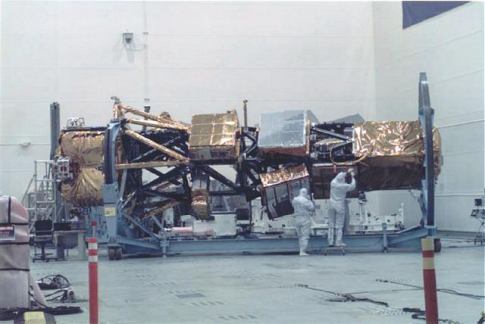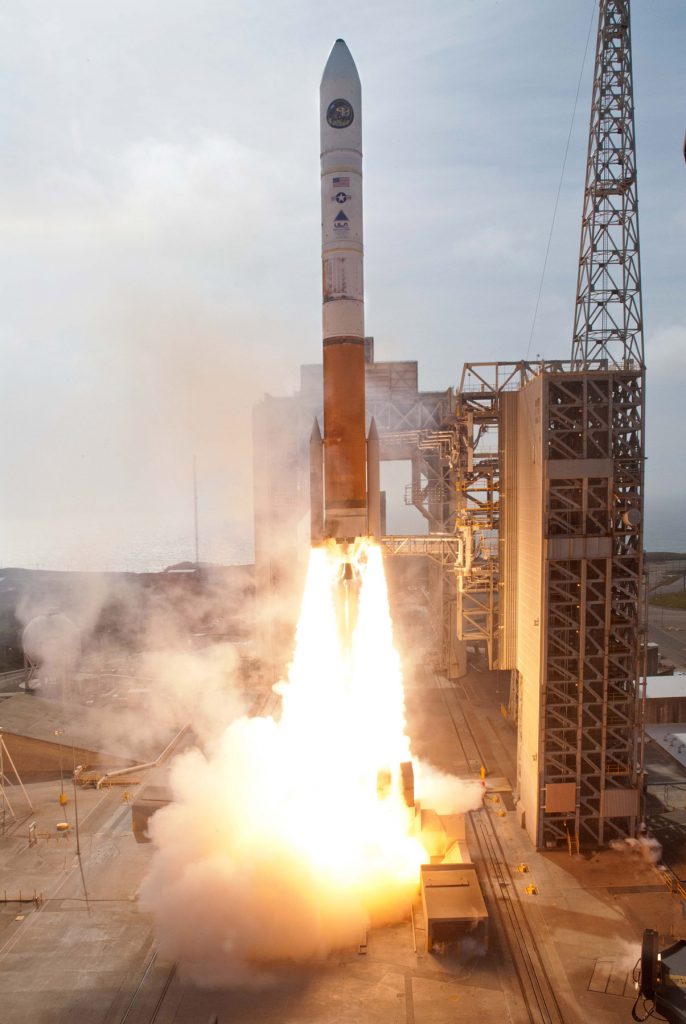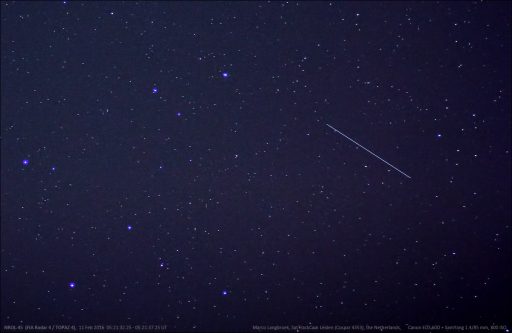Identifying the classified NROL-47 Satellite

NROL-47, with a fair degree of certainty, is the fifth FIA-Radar Satellite operated under the Future Imagery Architecture Program of the United States National Reconnaissance Office. Orbiting Earth in a characteristic retrograde – or ‘backwards’ – orbit, the FIA Radar satellites are tasked with the collection of day-and-night, all-weather imagery for distribution and analysis by various intelligence agencies.
The United States National Reconnaissance Office itself is an intelligence agency tasked with the design, construction and operation of all U.S. reconnaissance satellites and delivers satellite intelligence to other three-letter intelligence agencies including signals intelligence for the NSA, image reconnaissance data to the NGA and measurement & signature intelligence to the DIA. Established in 1961, the NRO has been shrouded in great secrecy and its existence as an agency was only first acknowledged in the early 1990s.
As an intelligence agency, the NRO goes through great lengths to keep its activities secret, therefore the identity of all NRO satellites is classified. However, it is possible to identify the nature of satellites taking into account their launch site, launch window, launch vehicle type and ascent path. Sometimes, hints can be found in mission logos and, after launch, most satellites are typically tracked in orbit by a worldwide network of observers, revealing from where they operate, and often what they are tasked with.

NROL-47 is a very easy case given the characteristic launch azimuth from California’s Vandenberg Air Force Base from where Delta IV will carry its payload into a retrograde orbit inclined 123 degrees. FIA Radar, also known under the code name Topaz, is the only NRO program operating from this type of orbit and the Delta IV M+(5,2) launch vehicle configuration has flown exclusively for Topaz.
Radar reconnaissance has become an important element of modern-day space-based intelligence-gathering as it allows for imaging at day and night and through clouds, even penetrating foliage to reveal what optical-image reconnaissance satellites can not see. Improvements in Synthetic Aperture Radar technology have allowed radar satellites to capture imagery at a ground resolution approaching that of optical imaging satellites.

Development of a SAR satellite system was started in the U.S. around 1976 under the code name Indigo and later Lacrosse with official approval for the program’s development coming in the early 80s. Before the program reached the launch pad, it was re-named Onyx and documentation leaked later showed it was also known under the designation ‘Program 3100.’ A total of five Onyx satellites were launched between 1988 and 2005, the first flew on Space Shuttle Atlantis into an orbit of 440 Kilometers while the remaining four were launched by Titan IV rockets and operated from higher orbits between 660 and 715 Kilometers in altitude.
The Onyx satellites, from what is known through various leaks and satellite observer information, were quite massive spacecraft – weighing in at around 15 metric tons and featuring a very large radar antenna and solar arrays with a wingspan near 45 meters to generate the power needed for the operation of the radar transmitter. Martin Marietta, later Lockheed Martin, served as the prime contractor for the program and each of the satellites operated upwards of nine years. The estimated ground resolution of the Onyx satellites is around one meter.
In an effort to consolidate its optical and radar imaging programs, the NRO initiated the Future Imagery Architecture (FIA) in 1999. The contract for the program, planned to consist of an optical and a radar component, was awarded to Boeing & valued at around $4 to 5 billion. Originally, the FIA program was initiated to focus on the miniaturization of satellites and to make the spacecraft harder to attack by placing them in orbits over 1,000 Kilometers in altitude.
As procurement information shows, the first launch was expected five years later, but the FIA program encountered serious technical challenges, particularly the optical component. By 2005, about $5 billion in cost overruns had been paid and the NRO director recommended the termination of FIA.

The program was formally canceled in September 2005 – Boeing kept the contract for the radar satellites while the optical component was shifted to Lockheed Martin to take the KH-11 Keyhole satellites as a basis and upgrade them with state of the art systems. In 2010, the NRO admitted that the program was 700% over in schedule and had a 300% overrun in budget.
Several years behind schedule, the first Topaz radar satellite launched in 2010 as NROL-41, USA-215 on an Atlas V 501. The second launch in April 2012 made use of a Delta IV Medium+ (5,2) rocket lifting the NROL-25 (USA-234) satellite. The December 2013 launch of NROL-39 (USA-247) utilizing an Atlas V caused a significant uproar among the public for its mission insignia showing an octopus with its tentacles grasping the world, along with the words ‘Nothing Is Beyond Our Reach’ – adding to the debate over liberties of U.S. intelligence services.
The NROL-45 launch in 2016 (USA 267) gave FIA four operational radar satellites with a spacing of 90 degrees between their orbital planes, optimized for revisit time.
In 2013, documents leaked by whistle-blower Edward Snowden, provided additional information on the FIA program, including its codename “Topaz.” According to documentation, five first-generation Topaz satellites are planned before they are succeeded by a Block II version – making NROL-47 the last Topaz Block I satellite. It remains to be seen where the satellite enters the existing four-satellite system.
